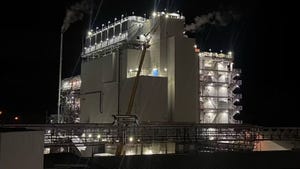Do demographics spell doom for China, rebirth for U.S. manufacturing?
What sets the U.S. apart from nearly every other industrialized nation? Kids, lots of them. At a time when birth rates in many parts of the world are going backwards, our Generation Y, those born from 1985-2004, is bountiful, some 100 million strong making up a group that outnumber even the baby boomers prolific 78.2 million born from 1945-1964.
April 14, 2011
Kenneth Gronbach, a demographer and futurist by trade, laid out just what that means for the U.S. and the world in a wide-ranging keynote presentation during the Society of the Plastics Industry's Spring 2011 National Board Conference (March 21-24; Scottsdale, AZ). SPI President and CEO, Bill Carteaux, saw Gronbach present to a group of U.S. manufacturing association executives earlier in the year and immediately knew who he'd bring to Scottsdale for SPI's spring meeting.
Gronbach told the breakfast audience that Generation Y, which has been augmented even further by an estimated 40 million Hispanic immigrants, will bring new blood to the U.S.'s work force, leadership, and consumer base at a time when other nations, particularly China, will age rapidly, with the Chinese profoundly impacted by its long-standing one-child policy.
"[Generation Y] is going to redefine everything," Gronbach said. "The rest of the world has stopped having, kids. We are the only industrialized western nation that's having kids." Generation Y also steps up at a time when Generation X, those born from 1965-1984, have failed to adequately fill in for aging Boomers since there are about nine million few of them. That gap looks miniscule compared to the gaping chasm the Chinese will stare into in coming years.
Gronbach noted that births per year in China dropped from 40 million to 10 million thanks to the country's 30-year-old one-child policy. From 1945-1964, there were 38 million births in China, but that rate dropped substantially over the coming decades. From 1965-1984, there were 21 million births, and from 1985-2004, when the U.S.'s Generation Y exploded, there were only 13 million births in China. It doesn't get better going forward for the country that many had already preordained as owning the new century. From 2005-2024, China is forecast to only have 10.9 million births.
"I don't know what's going to happen there," Gronbach told the audience, "but it's a demographic time bomb." Average births/1000 went from 20.9 in 1949 to only 13.3 in 2006, with more than 400 million births prevented by one-child-only. Gronbach's advice: "rent or lease" in China.
In Gronbach's view, China's loss will become the western hemisphere's gain, with a particular resurgence for the U.S. "Where is everyone going to manufacture?" Gronbach asked the audience, before emphatically answering the question himself, "Here."
Despite the hits it has taken in recent years, the U.S. still maintains a sizable and efficient manufacturing base. Gronbach also noted that the current recession has pushed many young workers and immigrants into trade schools, training the new generation of laborers and small-business owners.
"The strength of the U.S. is small entrepreneurial businesses," Gronbach said. "That's who we are."
About the Author(s)
You May Also Like


